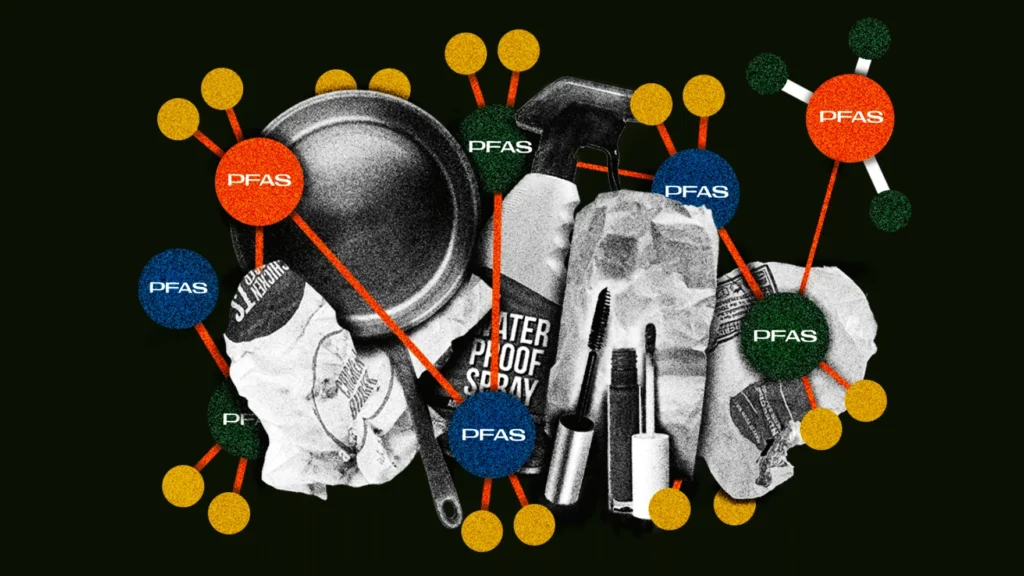Per- and polyfluoroalkyl substances (PFAS), a class of thousands of synthetic chemicals, have earned the ominous moniker “forever chemicals” due to their exceptional persistence in the environment and the human body. These chemicals, used for decades in a wide array of industrial and consumer products for their water and heat-resistant properties, are now pervasive contaminants in drinking water sources across the United States.
This widespread contamination poses significant economic burdens and serious public health risks, prompting a complex and evolving response from federal and state authorities.
The Ubiquity of PFAS and Its Sources
PFAS were developed in the 1940s and have since been used in numerous applications, including:
• Non-stick cookware: (e.g., Teflon)
• Food packaging: (e.g., grease-resistant wrappers)
• Stain-resistant fabrics: (e.g., carpets, upholstery)
• Firefighting foam: (Aqueous film-forming foams or AFFF)
• Industrial processes: (e.g., manufacturing of plastics, textiles)
This widespread use has led to the release of PFAS into the environment through various pathways, including industrial discharges, wastewater treatment plants, runoff from contaminated sites (such as military bases and airports where AFFF was used), and leaching from consumer products in landfills. Their persistence and mobility mean they can easily migrate into groundwater and surface water, contaminating drinking water sources that serve millions of Americans.
Economic Fallout: A Multi-Billion Dollar Problem
The economic implications of PFAS contamination are staggering. The costs associated with addressing this issue are borne by communities, water providers, and taxpayers. These costs include:
• Water treatment: Public water systems are facing escalating expenses to install and maintain advanced filtration systems capable of removing PFAS from drinking water. These technologies, such as granular activated carbon (GAC) and reverse osmosis, require substantial capital investment and ongoing operational costs.
• Site remediation: Cleaning up contaminated sites, such as military bases and industrial facilities, is an enormously complex and expensive undertaking. It often involves extensive testing, soil and groundwater treatment, and long-term monitoring.
• Health costs: While quantifying the precise economic burden of PFAS-related health effects is challenging, studies suggest that exposure to these chemicals is associated with a range of adverse health outcomes that can lead to significant medical expenses and lost productivity.
• Lost revenue/economic impact: Contamination can lead to loss of revenue for fisheries and tourism in affected areas. Property values in impacted areas may also decline.
The financial burden on municipalities is particularly acute. Small and disadvantaged communities often lack the resources to effectively address PFAS contamination, exacerbating environmental justice concerns.
Public Health Crisis: A Growing Body of Evidence
The scientific evidence linking PFAS exposure to adverse health effects is mounting. Studies have associated PFAS exposure with a range of health problems, including:
• Cancer: Increased risk of kidney and testicular cancer. Some studies also suggest links to other cancers, including bladder, prostate, and thyroid cancers.
• Endocrine disruption: Interference with hormone function, potentially leading to thyroid disease, reproductive problems, and developmental issues.
• Immune system suppression: Reduced vaccine response and increased susceptibility to infections.
• Developmental and reproductive effects: Low birth weight, pregnancy-induced hypertension, and effects on fertility.
• Increased cholesterol levels: Elevated levels of total cholesterol and LDL cholesterol.
• Liver damage: Including elevated liver enzymes.
These health effects pose a significant threat to public health, with potentially long-term consequences, especially for vulnerable populations such as children, pregnant women, and immunocompromised individuals. The long latency period for some of these diseases means that the full impact of PFAS exposure may not be evident for years or even decades.
The U.S. Response: A Complex Regulatory Landscape
The U.S. response to PFAS contamination has been multifaceted and is continuing to evolve.
• EPA Actions: The Environmental Protection Agency (EPA) has taken several key steps, including:
o Issuing health advisories for certain PFAS in drinking water.
o Developing National Primary Drinking Water Regulations (NPDWRs) for specific PFAS, establishing enforceable maximum contaminant levels (MCLs).
o Designating certain PFAS as hazardous substances under the Superfund law, which can facilitate cleanup efforts.
o Developing a PFAS Strategic Roadmap to address the issue comprehensively.
• State Actions: Many states have taken proactive measures to address PFAS contamination, often going beyond federal regulations. These actions include:
o Setting their own, more stringent drinking water standards.
o Requiring testing and monitoring of PFAS in drinking water.
o Implementing cleanup programs for contaminated sites.
o Restricting the use of PFAS in certain products.
• Legislation: Congress has also been involved, with ongoing discussions about legislation to address PFAS contamination, including measures to:
o Provide funding for water treatment and cleanup.
o Strengthening regulations on PFAS discharges.
o Hold polluters accountable.
Challenges and Future Directions
Despite these efforts, significant challenges remain.
• The vast number of PFAS: Regulating and treating all PFAS is a daunting task.
• Legacy contamination: The widespread persistence of PFAS in the environment means that contamination will continue to be a problem for many years to come.
• Evolving science: Research on the health effects of PFAS is ongoing, and our understanding of the risks is constantly evolving.
• Cost allocation: Determining who should bear the costs of cleanup and treatment (e.g., polluters, taxpayers) is a contentious issue.
Moving forward, a comprehensive and coordinated approach is essential. This will require:
• Continued research: To better understand the health risks of PFAS and develop more effective treatment technologies.
• Stronger regulations: To limit PFAS discharges and prevent further contamination.
• Increased funding: To support water treatment, site remediation, and community assistance.
• Polluter accountability: To ensure that those responsible for PFAS contamination are held accountable for the costs of cleanup.
• Public awareness: To educate the public about the risks of PFAS and the importance of protecting drinking water.
PFAS contamination of drinking water represents a significant environmental and public health challenge with far-reaching economic consequences. While the U.S. has taken steps to address this issue, a sustained and coordinated effort is crucial to protect communities, safeguard public health, and ensure access to clean and safe drinking water for all Americans. The costs of inaction are simply too high to bear.





